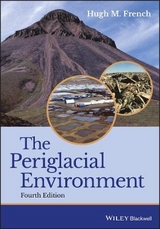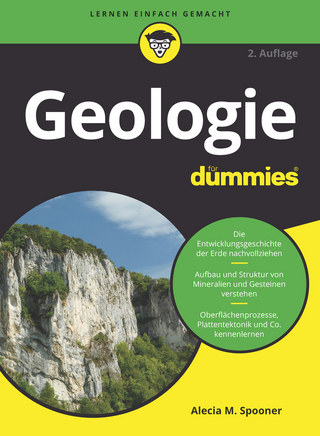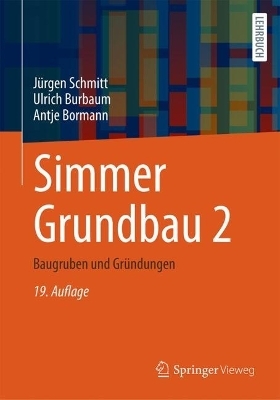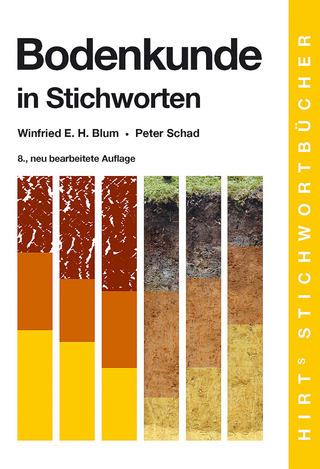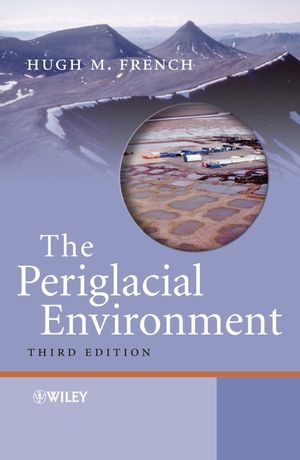
The Periglacial Environment
Wiley-Blackwell (Verlag)
978-0-470-86589-7 (ISBN)
- Titel erscheint in neuer Auflage
- Artikel merken
The Periglacial Environment, Third Edition, provides an authoritative overview of the worlda s cold, non-glacial environments. Emphasis is placed upon the North American and Eurasian polar lowlands, but examples are also drawn from Antarctica, the Qinghai-Xizang (Tibet) Plateau, and the northern mid-latitudes. First published in 1976 and subsequently revised in 1996, the text has been the international standard forA over 30 years. The Third Edition continues to be a personal interpretation of the frost-induced conditions, geomorphic processes, and landforms that typify periglacial environments. The text is divided into four parts. Part One discusses the periglacial concept and its interactions with geomorphology, geocryology and Quaternary science. It also outlines the range and variability of periglacial climates and the degree to whichA landscapes are in geomorphic equilibrium with prevailing periglacial conditions. Part Two describes present-day terrain that is either underlain by permafrost or experiencing intense frost action.
The roles played by cryogenic weathering, ground ice, mass wasting, running water, wind action, snow and ice, and coastal processes are systematically analysed. Part Three summarizes evidence for the existence of periglacial conditions during the cold periods of the Pleistocene, with special reference to the mid-latitudes of Europe and North America. Part Four illustrates the geotechnical problems associated with human activity and resource development in periglacial environments, and discusses the potential impact of global climate change in the northern high latitudes. This excellent textbook is an invaluable resource for second and third year undergraduate students of Physical Geography, Geology, Environmental Science and Earth Science. The Periglacial Environment, Third Edition is also anA informative reading for professionals, researchers and lecturers working and teaching in the field.
Hugh French has taught at The University of Ottawa, Canada, in the Departments of Geography (1967-2003), Geology (1980-1992) and Earth Sciences (1998-2003). He has been Dean of the Faculty of Science at the University of Ottawa (1992-1997), President of the International Permafrost Association (1998-2003), and Editor-in-Chief of Permafrost and Periglacial Processes (1990-2005). He is now Professor Emeritus, University of Ottawa.
PART ONE: THE PERIGLACIAL DOMAIN. 1. INTRODUCTION. 1.1. The periglacial concept. 1.2. Disciplinary considerations. 1.3. The growth of periglacial knowledge. 1.4. The periglacial domain. 1.5. The scope of periglacial geomorphology. Advanced reading. Discussion topics. 2. PERIGLACIAL LANDSCAPES? 2. 1 Introduction. 2. 2 Proglacial, paraglacial or periglacial? 2. 3 Unglaciated periglacial terrain. 2. 4 Relict periglacial landscapes. 2. 5. Conclusions. Advanced reading. Discussion topics. 3. PERIGLACIAL CLIMATES. 3.1 Boundary conditions. 3.2 Regional climates. 3.3 Ground climates. 3.4. Periglacial climates and the cryosphere. Advanced reading. Discussion topics. PART TWO: PRESENT-DAY PERIGLACIAL ENVIRONMENTS. 4. COLD-CLIMATE WEATHERING. 4. 1 Introduction. 4. 2 Ground freezing. 4. 3 Freezing and thawing. 4. 4. The ground temperature regime. 4. 5. Rock (frost?) shattering. 4. 6. Chemical weathering. 4. 7. Cryogenic weathering. 4. 8. Cryobiological weathering. 4. 9. Cryopedology. Advanced reading. Discussion topics. 5. PERMAFROST. 5. 1. Introduction. 5. 2. Thermal and physical properties. 5. 3. How does permafrost aggrade? 5. 4. Distribution of permafrost. 5. 5. Relict permafrost. 5. 6. Permafrost hydrology. 5. 7 Permafrost and terrain conditions. 5. 8. The active layer. Advanced reading. Discussion topics. 6. SURFACE FEATURES OF PERMAFROST. 6. 1. Introduction. 6. 2. Thermal-contraction-crack polygons. 6. 3. Organic terrain. 6. 4. Rock glaciers and permafrost creep. 6. 5. Frost mounds. 6. 6. Active-layer phenomena. Advanced reading. Discussion topics. 7. GROUND ICE. 7. 1. Definition and description. 7. 2. Classification. 7. 3. Ice distribution. 7. 4. Cryolithology and cryostratigraphy. 7.5 Ice wedges. 7. 6. Massive ice and massive-icy bodies. 8. THERMOKARST. 8. 1 Introduction. 8. 2. Causes of thermokarst. 8. 3. Thaw-related processes. 8. 4. Thermokarst sediments and structures. 8.5. Ice-wedge thermokarst relief. 8. 6. Thaw lakes and depressions. 8. 7. Thermokarst-affected terrain. 8. 8. Man-Induced thermokarst Advanced reading. Discussion topics. 9. HILLSLOPE PROCESSES AND SLOPE EVOLUTION. 9. 1. Introduction. 9. 2. Slope morphology. 9. 3. Mass wasting. 9. 4. Slow mass-wasting. 9. 5. Rapid mass-wasting. 9.6 Slopewash. 9.7. Frozen and thawing slopes. 9. 8. Cold-climate slope evolution. Advanced reading. Discussion topics. 10. AZONAL PROCESSES AND LANDFORMS. 10. 1. Introduction. 10. 2. Fluvial processes and landforms. 10.3. Aeolian processes and sediments. 10.4 Coastal processes and landforms. PART THREE: WUATERNARY AND LATE-PLEISTOCENE PERIGLACIAL ENVIRONMENTS. 11. QUATERNARY PERIGLACIAL CONDITIONS. 11. 1. Introduction. 11. 2. The time scale and climatic fluctuations. 11. 3. Global (eustatic) considerations. 11. 4. Pleistocene periglacial environments of high latitude. 11. 5. Pleistocene periglacial environments of mid-latitude. 11. 6. Conclusions. Advanced reading. Discussion topics. 12. EVIDENCE FOR PAST PERMAFROST. 12. 1. Introduction. 12. 2. Past permafrost aggradation. 12. 3. Past permafrost degradation. 12. 4. Summary. Advanced reading. Discussion topics. 13. PERIGLACIAL LANDSCAPE MODIFICATION. 13. 1. Introduction. 13. 2. Intense frost action. 13. 3. Intense wind action. 13. 4. Fluvial activity. 13. 5. Slope modification. Advanced reading. Discussion topics. PART FOUR: APPLIED PERIGLACIAL GEOMORPHOLOGY. 14. GEOTECHNICAL AND ENGINEERING ASPECTS. 14. 1. Introduction. 14. 2. Cold-regions engineering. 14. 3. Provision of municipal services and urban infrastructure. 14. 4. Construction of buildings and houses. 14. 5. Problems of water supply. 14. 6. Roads, bridges, railways and airstrips. 14. 7. Oil and gas development. 14. 8. Mining activities. Advanced reading. Discussion topics 15. CLIMATE CHANGE AND PERIGLACIAL ENVIRONMENTS. 15. 1. Global change and cold regions. 15. 2. Climate change and permafrost. 15. 3. Future responses. 15. 4. The urban infrastructure. 15. 5. Conclusions. Advanced reading. Discussion topics. References. Index.
| Erscheint lt. Verlag | 1.3.2007 |
|---|---|
| Verlagsort | Hoboken |
| Sprache | englisch |
| Maße | 172 x 244 mm |
| Gewicht | 790 g |
| Themenwelt | Naturwissenschaften ► Geowissenschaften ► Geologie |
| ISBN-10 | 0-470-86589-X / 047086589X |
| ISBN-13 | 978-0-470-86589-7 / 9780470865897 |
| Zustand | Neuware |
| Informationen gemäß Produktsicherheitsverordnung (GPSR) | |
| Haben Sie eine Frage zum Produkt? |
aus dem Bereich
